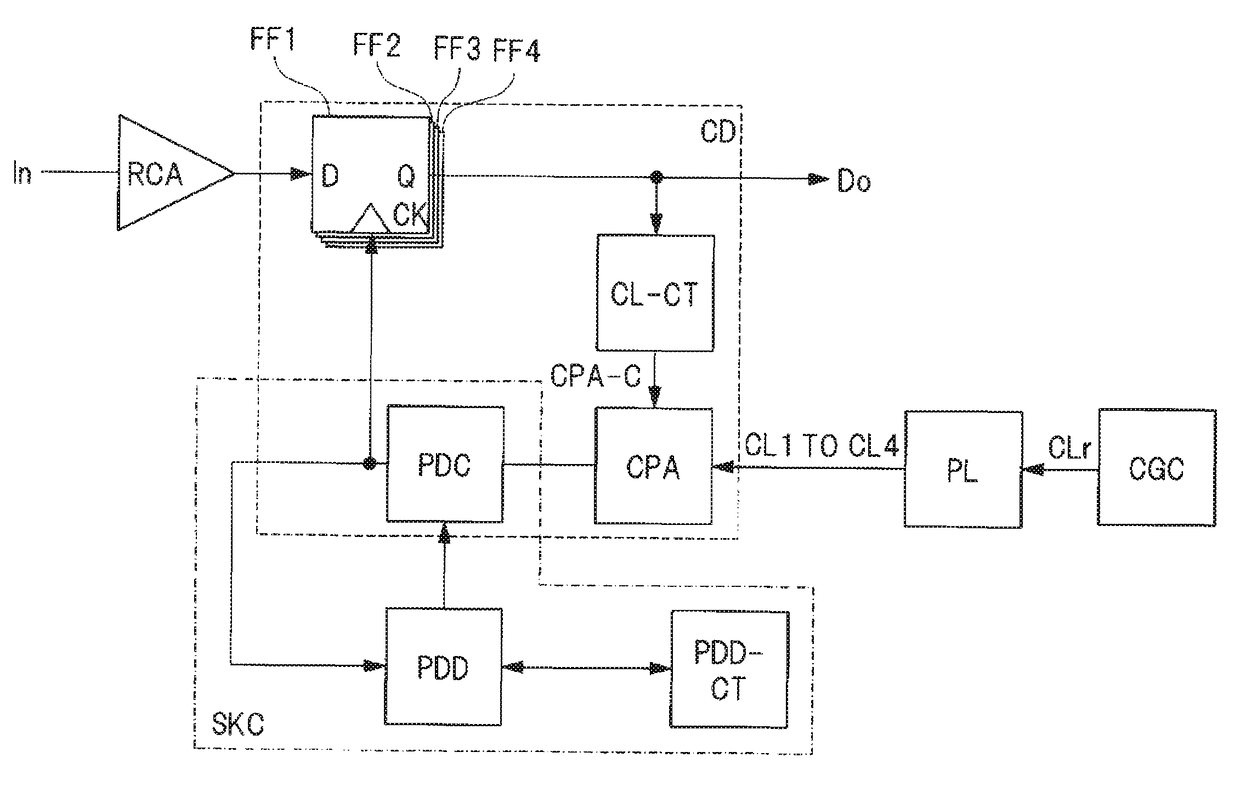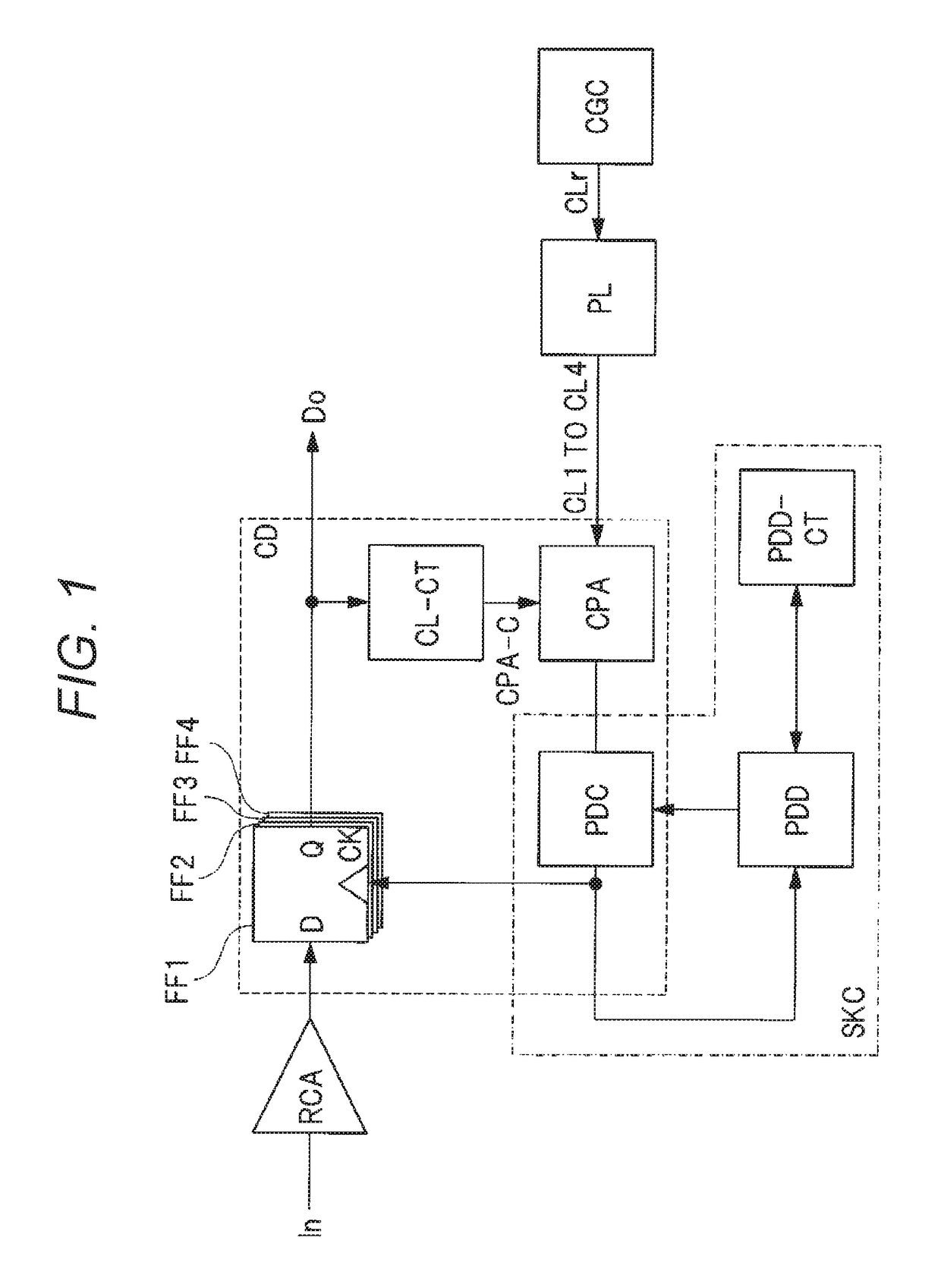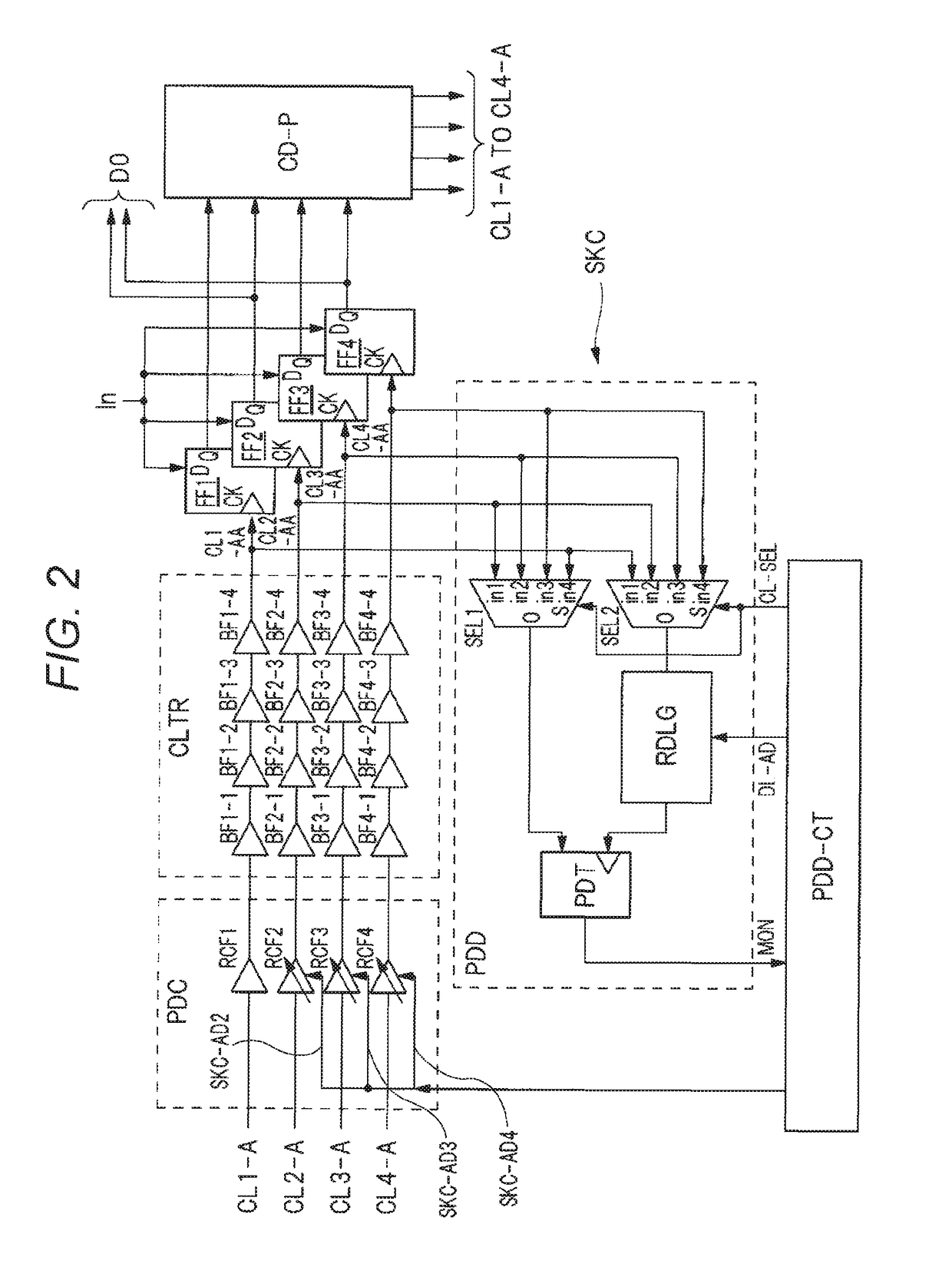Skew adjustment circuit, semiconductor device, and skew calibration method
a technology of skew and adjustment circuit, which is applied in the direction of pulse manipulation, pulse technique, baseband system details, etc., can solve the problems of difficult sampling of input signals, erroneous operation, and difficulty in reducing the variation of phase intervals between clock signals, so as to reduce erroneous operation
- Summary
- Abstract
- Description
- Claims
- Application Information
AI Technical Summary
Benefits of technology
Problems solved by technology
Method used
Image
Examples
first embodiment
[0032]
[0033]FIG. 8 is a schematic sectional view illustrating a configuration of an electronic apparatus using a semiconductor device according to a first embodiment. In FIG. 8, an information communication apparatus 100 is an electronic apparatus. The information communication apparatus 100, although it is not particularly limited, includes a back plane BP on which a plurality of connectors CNT1-CNTn is mounted, and cards RCD1-RCDn attached to the connectors CNT1-CNTn.
[0034]In the back plane BP, multiple wirings are formed for electrically connecting the connectors CNT1-CNTn to each other, and the wirings become transmission lines when data are transmitted between the connectors CNT1-CNTn. In FIG. 8, the transmission lines configured by the wirings formed on the back plane BP are illustrated as DLL(1)-DLL(i). In addition, for convenience of description, the transmission line used for data transmission between the connector CNT1 and the connector CNTn is illustrated as the DLL(1), a...
second embodiment
[0161]FIG. 7 is a flowchart diagram illustrating operation of the skew adjustment circuit SKC according to a second embodiment. In the first embodiment, as described in FIG. 4, the operation has been performed in which the reference value of the phase interval is obtained in the calibration period, and the phase interval is adjusted between the clock signals being close to each other by using the reference value obtained. That is, in the example illustrated in FIG. 4, first, adjustment operation is performed so that the phase interval between the clock signals CL1-AA and CL2-AA being close to each other is matched with the reference value, and the phase interval between the clock signals CL1-AA and CL2-AA is adjusted to be matched with the reference value, and then the phase interval between the clock signals CL2-AA whose phase is adjusted to the clock signal CL1-AA and the clock signal CL3-AA is adjusted to be matched with the reference value. In addition, after the phase interval ...
PUM
 Login to View More
Login to View More Abstract
Description
Claims
Application Information
 Login to View More
Login to View More - R&D
- Intellectual Property
- Life Sciences
- Materials
- Tech Scout
- Unparalleled Data Quality
- Higher Quality Content
- 60% Fewer Hallucinations
Browse by: Latest US Patents, China's latest patents, Technical Efficacy Thesaurus, Application Domain, Technology Topic, Popular Technical Reports.
© 2025 PatSnap. All rights reserved.Legal|Privacy policy|Modern Slavery Act Transparency Statement|Sitemap|About US| Contact US: help@patsnap.com



